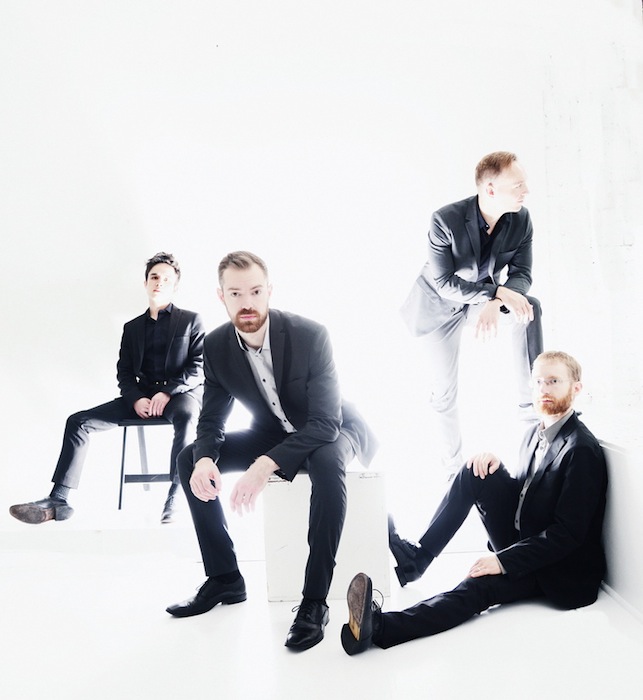JL Adams achieves a timeless simplicity in new work for JACK Quartet

JACK Quartet performed John Luther Adams’ “Everything That Rises” Thursday night at the DiMenna Center. Photo: Shervin Lainez
One of the most fruitful current collaborations in classical music is between composer John Luther Adams and the eminent JACK Quartet. Over the last few years, the two have produced music with Adams’ typical sonic beauty and that is some of the most insightful in the composer’s career.
Thursday night at the DiMenna Center, JACK played Adams’ latest work for string quartet, Everything That Rises. This New York premiere was part of this week’s Time:Spans festival, produced by the Earle Brown Foundation.
Adams is an important presence on the current music scene. His thinking and artistic accomplishments stand on their own, and have bridged the strange gap between modernist classical music and the strangely still-fringe music of La Monte Young and Terry Riley.
Everything That Rises provided further testimony to Adams’ achievements. As impressively beautiful as anything he’s written, the music digs down deep into the basic, core values he’s been exploring for decades. It is, in fact, a direct expression of those values, made with the repetition of a single idea, with nothing extraneous, wasted, nor redundant.
The title is a metaphor for that feeling, and a description of how the music was organized. It is also evocative of Harley Gaber’s monumental The Winds Rise in the North, another work for strings that uses simple, repeated material to explore complex mysteries. To cement the connection between the sound of music and the images words invoke, Everything That Rises builds upon Adams’ first string quartet, also written for JACK, the open-string composition The Wind in High Places.
Everything That Rises takes that beginning idea to the most fundamental level. Over 70 minutes, a series of staggered, ascending arpeggios level off in sustained trills—moving from forte to a barely audible sul tasto, and rising from the bottom of the cello register to high into those of the violins and viola. That’s the form—structurally it is nothing more than the spellings of the natural overtone series on the instruments’ different strings.
And that is the aesthetic and intellectual genius of the piece. Beyond a response to the natural wonders of forests, glaciers, and oceans—common features of Adams’ work—it is a mediation on the physical properties of the universe itself, of which the overtone series is a real and important feature. It also makes a statement for how to think about the art of composition and classical music. Simplicity itself, on paper it probably looks like nothing more than a set of practice exercises. But even long tones can be presented and performed with musicality and meaning, as JACK played these arpeggios. The musicians played with a calm concentration and a loveliness and fullness of tone that was palpable even at the quietest moments.
As infrequently as he’s written for string quartet, the genre clearly pares away everything in Adams’ thinking and gets him to his very core as a composer. Everything That Rises is art without artifice, and its beauty transports the listener into a timeless place outside of everyday experience, surely one of music’s most exalted goals.
Time:Spans continues through Saturday at the DiMenna Center. Bozzini Quartet plays music of Jürg Frey 8 p.m., Friday. earle-brown.org/#timespans2017






